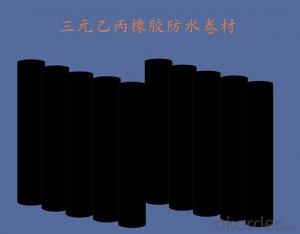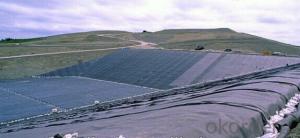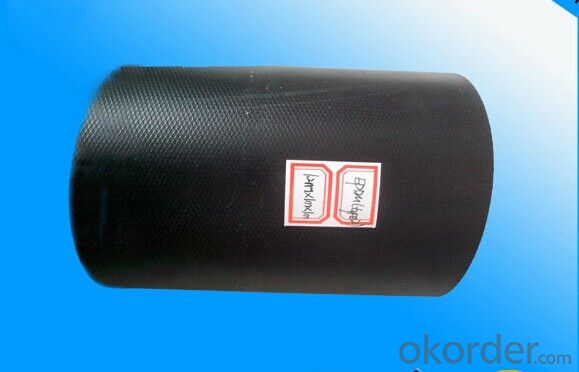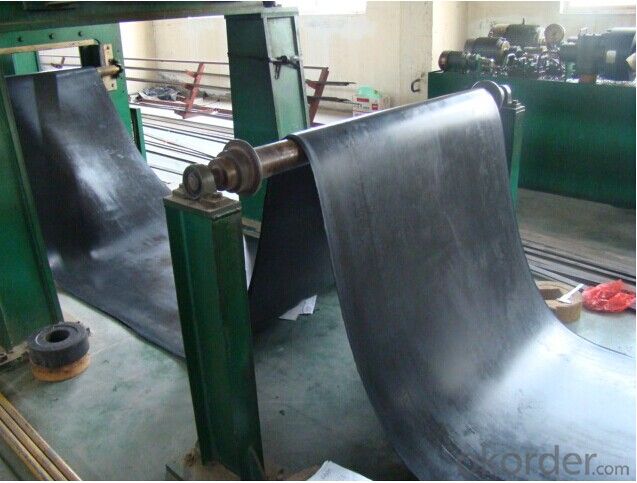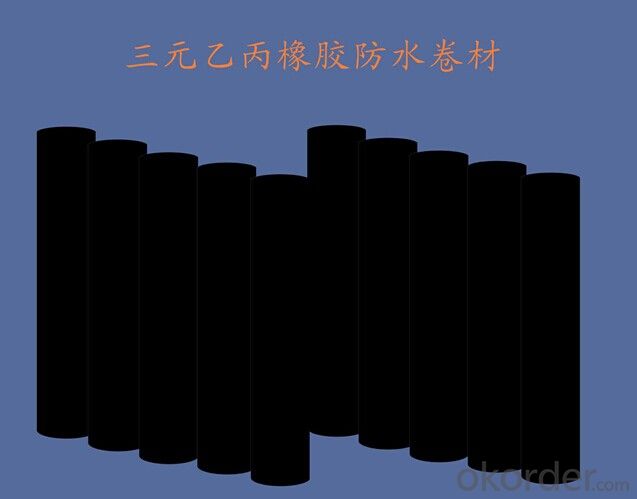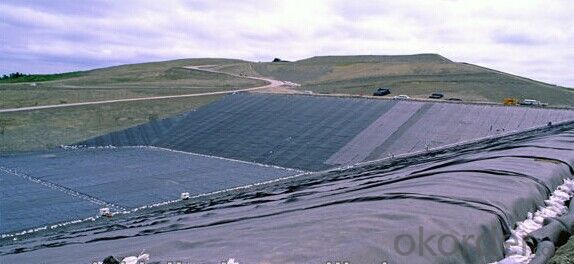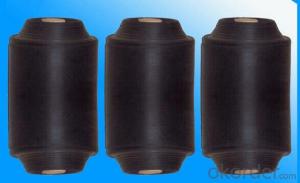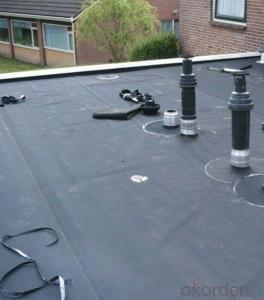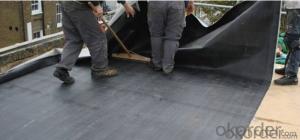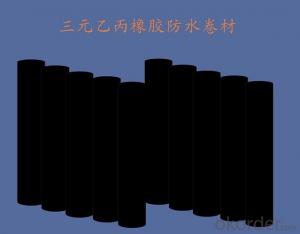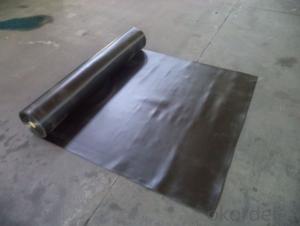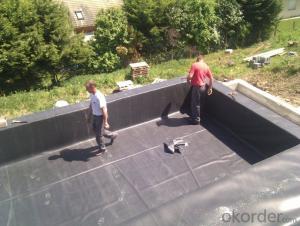Waterproofing EPDM Pond Liner In Rolls for Roof/Garden/Poor Use
- Loading Port:
- Qingdao
- Payment Terms:
- TT OR LC
- Min Order Qty:
- 2000 m²
- Supply Capability:
- 100000 m²/month
OKorder Service Pledge
OKorder Financial Service
You Might Also Like
1. Product Introduction:
This waterproof coiled material is of high elasticity with best performance among high polumer
waterproof coiled material in the world.It is also the most typical one in the world.Waterproof coiled material made of ternary ethylene-propylene rubber is produced withthe use of the most advanced contiuous extrusion and vulcanization technology and related equipments which are specially designed for production of such product.It is good in compactness,without bubble and performance difference in length and breadth,perfomances reach or exceedthe demands of GB18173.1-2000 standard.
2. Product Specification:
There are two installation ways.one is full sticking,the other is hot welding.
Thickness | 2mm,3mm,4mm,5mm |
Width | 1.02m/roll or customized |
Length | 10m/roll or customized |
Temprature Centigrade | -5,-10, -15, -20, -25, -30 |
Base felt/Tyre | PY,G,PYG |
Surface Material | PE film, colored sand, mineral grain, aluminum foil |
3. Technical Sheet:
Number | Item | Unit | Value | |
1 | Size Variation | Thichness | % | ±10 |
Width | % | ±1 | ||
Length | % | Allowed negative | ||
2 | Breaking tensile strength at normal temperature | Mpa | ≥7.5 | |
Breaking tensile strength at 70°C | Mpa | ≥2.3 | ||
3 | Breaking elongation at normal temperature | % | ≥450 | |
Breaking elongation at -20°C | % | ≥200 | ||
4 | Tear strength | KN/m | ≥25 | |
5 | Impermeability(30min) | * | 0.3Mpa no leakage | |
6 | Bending at low tempreture | °C | ≤-40 | |
7 | Stretch tensor at heating | Elongate | mm | ≤2 |
Shrink | mm | ≤4 | ||
8 | Air oven aging(80°C×168h) | Tensile strength at break retained | % | ≥80 |
Elongation at break retained | % | ≥70 | ||
9 | Anti-alkali | Tensile strength at break retained | % | ≥80 |
Elongation at break retained | % | ≥80 | ||
10 | Nuture weathing at manual simulation | Tensile strength at break retained | % | ≥80 |
Elongation at break retained | % | ≥70 | ||
4. Features:
1. Waterproofing EPDM pond liner has excellent resistance to environmental stress cracking resistance, aging resistance, corrosion resistance as well as long service life.
2.Waterproofing EPDM pond liner has the lowest permeability
3. Waterproofing EPDM pond liner has high elongation,heat treatment the size change is small
5. Product Application:
EPDM waterproof membranes form an effective barrier to liquid water or water vapor in the roof construction for industrial and civil engineering, underground engineering such as subway & tunnel, water conservancy such as water pools & ditch, shelter, grain depot, land filling, dyke and subway.
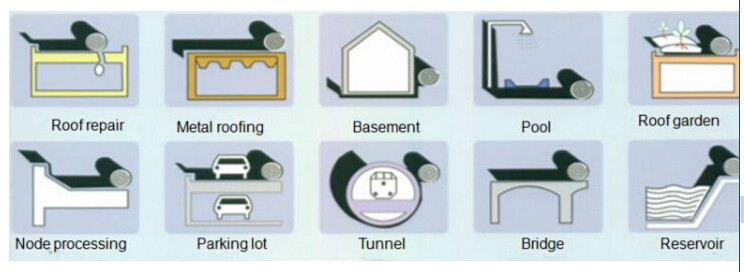
5. Some photos:
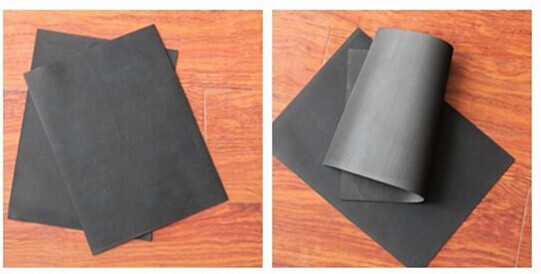
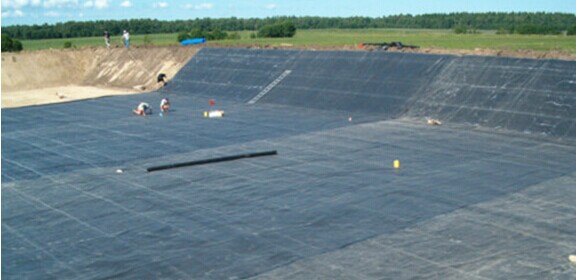
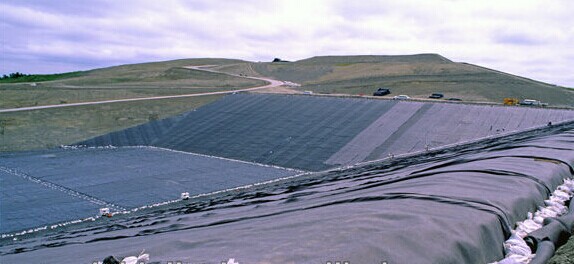
- Q: Can a waterproofing membrane be used for a green roof?
- Yes, a waterproofing membrane can be used for a green roof. A waterproofing membrane is an essential component of any green roof system as it helps to protect the underlying structure from water damage. It prevents water infiltration, which can cause structural damage and mold growth. Additionally, a waterproofing membrane helps to retain the necessary moisture within the green roof system, ensuring the plants have a consistent water supply. By using a waterproofing membrane, you can effectively create a sustainable and environmentally friendly green roof while also maintaining the integrity of the building structure.
- Q: Can a waterproofing membrane be used in swimming pools or water features?
- Yes, a waterproofing membrane can be used in swimming pools or water features. Waterproofing membranes are often used in these applications to create a barrier between the water and the surrounding structure. This helps prevent water leakage and damage to the structure, ensuring the longevity and durability of the swimming pool or water feature. The membrane is typically applied to the surface of the structure and can be made of various materials such as rubber, PVC, or bitumen. It is important to choose a membrane that is specifically designed for underwater applications to ensure its effectiveness in providing a watertight seal. Additionally, proper installation and regular maintenance of the waterproofing membrane are crucial to ensure its long-term performance.
- Q: Can a waterproofing membrane be used in conjunction with building code requirements?
- Yes, a waterproofing membrane can be used in conjunction with building code requirements. In fact, many building codes require the use of waterproofing membranes in certain areas, such as below-grade structures or wet areas like bathrooms and kitchens, to prevent water damage and protect the structural integrity of the building.
- Q: Is a waterproofing membrane suitable for use in areas with high groundwater levels?
- Yes, a waterproofing membrane is suitable for use in areas with high groundwater levels. The membrane acts as a barrier, preventing water from seeping into structures and causing damage. It provides an effective solution for protecting foundations, basements, and other below-grade areas from water infiltration.
- Q: Can a waterproofing membrane be used on precast aluminum surfaces?
- Yes, a waterproofing membrane can be used on precast aluminum surfaces. Waterproofing membranes are designed to protect surfaces from water infiltration, including concrete, metal, and other materials. The membrane acts as a barrier, preventing water from seeping into the precast aluminum surface. This can be particularly beneficial in areas where moisture exposure is high, such as around swimming pools or in outdoor environments. It is important to choose a waterproofing membrane that is compatible with aluminum to ensure proper adhesion and long-term effectiveness.
- Q: How thick should a waterproofing membrane be?
- The thickness of a waterproofing membrane depends on various factors such as the type of membrane, the specific application, and the level of protection required. Generally, the thickness of a waterproofing membrane can range from 0.5mm to 4mm. For below-grade waterproofing applications, such as basements or foundations, a thicker membrane is typically recommended to provide enhanced protection against water infiltration and potential hydrostatic pressure. In such cases, a membrane thickness of around 2mm to 4mm is commonly used. On the other hand, for above-grade applications like roofs or balconies, a thinner membrane can often suffice. A thickness of 0.5mm to 2mm is typically adequate to provide a reliable waterproofing barrier. It is important to note that the thickness alone does not determine the effectiveness of a waterproofing membrane. Other factors such as the material's composition, quality, and installation techniques also play a significant role in ensuring a durable and efficient waterproofing solution. Therefore, it is essential to consult with a professional waterproofing expert or manufacturer to determine the appropriate thickness based on the specific requirements and conditions of the project.
- Q: Can a waterproofing membrane be used on concrete slabs or foundations?
- Yes, a waterproofing membrane can be used on concrete slabs or foundations. It serves as a protective barrier against water penetration, preventing moisture-related issues such as leaks, mold, and structural damage. The membrane is typically applied to the exterior surface of the concrete to create a waterproof seal.
- Q: Can a waterproofing membrane be used for loading docks?
- Yes, a waterproofing membrane can be used for loading docks. Waterproofing membranes are commonly used in various construction applications to protect the underlying structures from moisture and water damage. Loading docks, being exposed to a high level of foot and vehicle traffic as well as potential water infiltration, can benefit from the installation of a waterproofing membrane. A waterproofing membrane creates a barrier against water intrusion, preventing moisture from seeping into the loading dock area. This is particularly important as moisture can weaken the structural integrity of the dock, leading to potential damage and safety hazards. By installing a waterproofing membrane, loading docks can be protected from water-related issues such as corrosion, mold, and deterioration. In addition to water protection, some waterproofing membranes also offer other benefits such as anti-slip properties or resistance to chemicals and oils, which can be advantageous in a loading dock environment. These additional features enhance the safety and durability of the loading dock, making it more suitable for heavy loads and frequent use. It is important to note that when selecting a waterproofing membrane for loading docks, consideration should be given to the specific requirements and conditions of the dock area. Factors such as the type of traffic, load capacity, and exposure to harsh environments should be evaluated to ensure that the chosen membrane is suitable for the intended use. In conclusion, a waterproofing membrane can be effectively used for loading docks to protect against water damage, enhance safety, and improve the longevity of the structure.
- Q: Can waterproofing membranes be used on shower walls?
- Indeed, waterproofing membranes are suitable for application on shower walls. They play a crucial role in shower construction by preventing water leakage and safeguarding adjacent areas from potential harm. These membranes act as a barrier, effectively blocking water infiltration into the shower's structural components. Typically, they are installed behind the tile or other wall coverings, serving as an additional protective layer. Designed to be pliable, long-lasting, and moisture-resistant, waterproofing membranes guarantee the preservation of watertight shower walls and safeguard against any water-related harm.
- Q: Can waterproofing membranes be used on roofs?
- Yes, waterproofing membranes can be used on roofs. Waterproofing membranes are specially designed materials that are used to provide a protective layer on roofs to prevent water penetration. These membranes are typically made of materials such as modified bitumen, EPDM, PVC, or TPO, which are highly resistant to water and can effectively seal the roof. They are commonly used in both residential and commercial applications, including flat roofs, low-slope roofs, and even sloped roofs with certain designs. Waterproofing membranes are applied in multiple layers to ensure maximum protection against water damage and can greatly extend the lifespan of a roof by preventing leaks and moisture buildup.
Send your message to us
Waterproofing EPDM Pond Liner In Rolls for Roof/Garden/Poor Use
- Loading Port:
- Qingdao
- Payment Terms:
- TT OR LC
- Min Order Qty:
- 2000 m²
- Supply Capability:
- 100000 m²/month
OKorder Service Pledge
OKorder Financial Service
Similar products
Hot products
Hot Searches
Related keywords


